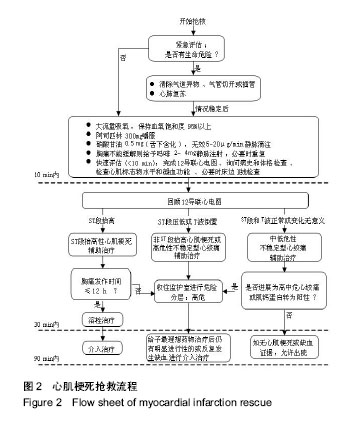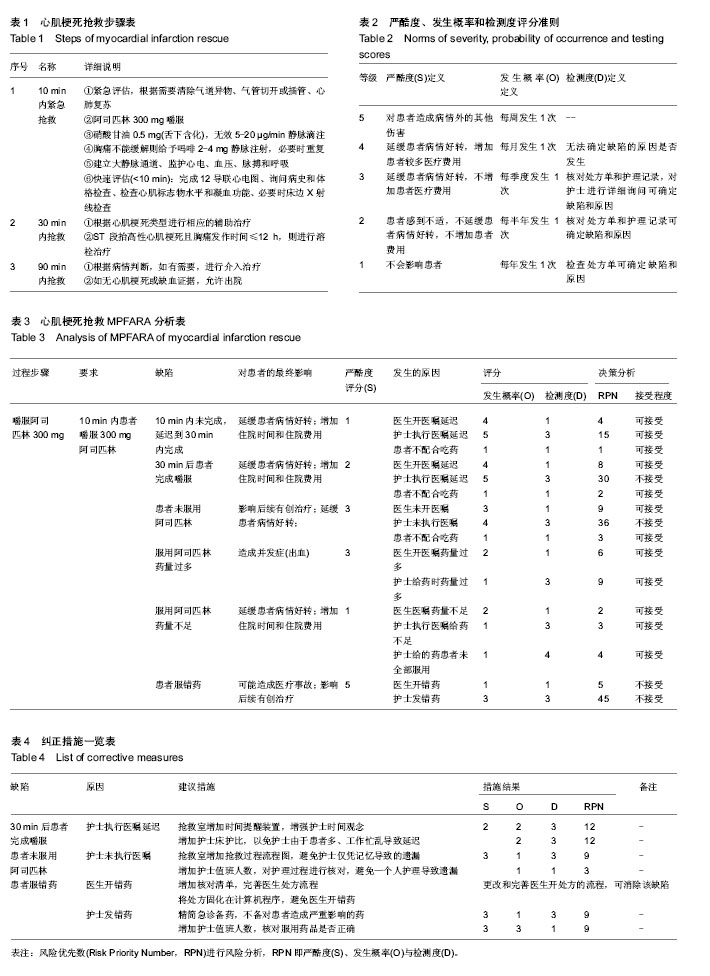| [1] 陈颖,康锐.FMECA技术及其应用(第2版)[M].北京:国防工业出版社,2014.
[2] 周功祥.FMEA质量理念及运用步骤[J].轻型汽车技术,2013,(10): 58-61.
[3] Chrysler LLC, Ford Motor Company, General Motors Corporation. “Potential failure mode and effects analysis (FMEA) Reference Manual Fourth Edition”. 2008.
[4] Kmenta S, Fitch P, Ishii K. Advanced failure modes and effects analysis of complex processes. Proceedings of the 1999 ASME design engineering technical conferences, DETC99/DFM-8939. 1999.
[5] Price CJ. Function-directed electrical design analysis. Artific Int Eng. 1998;12(4):445-456.
[6] Kimura F, Hata T, Kobayashi N. Reliability-Centered Maintenance Planning based on Computer-Aided FMEA, The 35th CIRP-International Seminar on Manufacturing Systems. 2002.
[7] Nannikar DN, Raut RM. FMEA for Manufacturing and Assembly Process. Int Conf Tech Business Management. 2012;(5):501-509.
[8] 曾成,韩依楠.PFMEA在SMT装配中的应用研究[J].绿色质量与管理,2009(8):44-51.
[9] 张炜,聂时南,邵旦兵.风险管理在急诊科的应用[J].医学研究生学报,2012,25(9):957-960.
[10] 陈敏,陈旭.医疗过程质量实时监控系统研究[J].中国医院管理, 2014,4(5):34-36.
[11] 许苹,孔令曼,秦婷,等.建立医疗风险预警机制的若干构想[J].中国卫生质量管理,2006,13(1):9-11.
[12] 许苹,秦婷,连斌,等.试论医疗风险预警体系构建[J].现代预防医学,2007,34(2):392-394.
[13] 吴宏,杨兴辰,连斌.医疗风险现状调查与分析研究[J].中国卫生质量管理,2009,16(4):2-4.
[14] 李升,黄玉珊.中国医疗风险预警机制的现状与初步评价[J].井冈山大学学报,2010,31(2):117-120.
[15] 王东红.中国医疗风险预警研究现状分析与展望[J].中国卫生质量管理,2014,2(21):28-30.
[16] 郝璐,陈黎明,健康管理现状与发展思考[J].解放军医院管理杂志, 2014,2(26):158-160.
[17] 杨克虎,马彬.美国医疗风险监测预警机制现状及绩效的循证评价[J].中国循证医学杂志,2006(6):439-450.
[18] 毕桂泉,王再岭.医院加强医疗风险管理初探[J].解放军医院管理杂志,2014,2(15):144-145.
[19] 孙楠,黎爱军.医疗风险影响因素调查分析和对策研究[J].中国卫生质量管理,2009,16(4):5-7.
[20] Matthew Grissinger. Failure mode and effects analysis can help guide error-prevention efforts. Med Error. 2003; 28(1): 8.
[21] Chadwick L, Fallon EF. Evaluation and critique of healthcare failure mode and effect analysis applied in a radiotherapy case study. Human Factors and Ergonomics in Manufacturing Service Industries. 2013;23(2):116-127.
[22] Christina N, Cote J, Lebel D. The AMELIE project: failure mode, effects and criticality analysis: a model to evaluate the nurse medication administration process on the floor. J Eval Clin Prac. 2013;19(1):192-199.
[23] 许苹,许敏,刑茂迎,等.FMEA在医疗风险管理中的应用以及局限性[J].现代预防医学,2007,34(1):51-52.
[24] 李洋,杜蕾.FMEA法在医疗风险管理中的应用现状与展望[J].中国医院管理,2014,9(35):36-37.
[25] 潘黎,潘小炎.中国医疗失效模式与效应分析的应用现状及问题[J].医学与哲学(B),2014,6(35):89-93.
[26] 曹松美.失效模式与效应分析在住院患者静脉用药管理中的应用[J].中国误诊学杂志,2012,12(7):1611-1612.
[27] 黄春燕.刘霜梅.吴晓静,等.医疗失效模式与效应分析在老年患者跌倒风险中的应用[J].护士进修杂志,2013,28(3):256-258.
[28] 赖翠薇.应用FMEA改进高血压脑出血患者的护理方法[J].临床医学工程,2012,19(12):2226-2227.
[29] 周小桥.过程失效模式及后果分析:制定项目风险管理计划的有效工具[J].项目管理技术,2004,(5):32-36.
[30] 王竹,刘胧,马帅.医疗设备使用风险评估中的FMECA新方法[J].工业工程,2012,15(2):11-16.
[31] 王文旭.FMEA技术在危险源辨识、风险评价、风险控制策划中的应用[J].中国质量认证,2004,(8):49-51.
[32] Bukofzer S, Ayres J, Chavez A, et al. Industry perspective on the medical risk of visible particles in injectable drug products. PDA J Pharm Sci Technol. 2015;69(1):123-139.
[33] Satasivam P, Reeves F, Rao K, et al. Patients with medical risk factors for chronic kidney disease are at increased risk of renal impairment despite the use of nephron-sparing surgery. BJU Int. 2015. doi: 10.1111/bju.13075.
[34] Tonning Olsson I, Perrin S, Lundgren J, et al. Long-term cognitive sequelae after pediatric brain tumor related to medical risk factors, age, and sex. Pediatr Neurol. 2014;51(4): 515-521.
[35] Gaston RS, Kumar V, Matas AJ. Reassessing Medical Risk in Living Kidney Donors. J Am Soc Nephrol. 2014.
[36] Spangler EL, Goodney PP, Schanzer A, et al. Outcomes of carotid endarterectomy versus stenting in comparable medical risk patients. J Vasc Surg. 2014;60(5):1227-1231.
[37] Stoff BK, Swerlick RA. Reframing risk part II: Methods for improving medical risk communication. J Am Acad Dermatol. 2013;69(4):637-639.
[38] Stoff BK, Cruze D, Swerlick RA. Reframing risk part I: Legal and ethical standards for medical risk disclosure. J Am Acad Dermatol. 2013;69(4):634-636.
[39] Chang JS, Tsai CR, Chen LT. Medical risk factors associated with cholangiocarcinoma in Taiwan: a population-based case-control study. PLoS One. 2013;8(7):e69981.
[40] Izadi N, Malek M, Aminian O, et al. Medical risk factors of diabetes mellitus among professional drivers. J Diabetes Metab Disord. 2013;12(1):23.
[41] Alhadad A, Wictorsson C, Alhadad H, et al. Medical risk factor treatment in peripheral arterial disease. Need for further improvement. Int Angiol. 2013;32(3):332-338.
[42] Altamash M, Arledal S, Klinge B, et al. Pre-diabetes and diabetes: Medical risk factors and periodontal conditions. Acta Odontol Scand. 2013;71(6):1625-1631.
[43] Sudzinova A, Nagyova I, Studencan M, et al. Roma coronary heart disease patients have more medical risk factors and greater severity of coronary heart disease than non-Roma. Int J Public Health. 2013;58(3):409-415.
[44] Brand HS. Reaction to European medical risk registered case history system. Ned Tijdschr Tandheelkd. 2013;120(2):56.
[45] Abraham-Inpijn L. European medical risk registered case history system. Ned Tijdschr Tandheelkd. 2013;120(2):56.
[46] Brand H. Dentists should apply the european medical risk registered history taking system to every patient. Ned Tijdschr Tandheelkd. 2012;119(9):409.
[47] Gortzak R. Dentists should apply the European Medical Risk Registered History Taking System to every patient. Ned Tijdschr Tandheelkd. 2012;119(9):408.
[48] Lindsey NP, Staples JE, Lehman JA, et al. Medical risk factors for severe west nile virus disease, United States, 2008-2010. Am J Trop Med Hyg. 2012;87(1):179-184.
[49] Treyvaud K, Inder TE, Lee KJ, et al. Can the home environment promote resilience for children born very preterm in the context of social and medical risk? J Exp Child Psychol. 2012;112(3):326-337.
[50] Lundequist A, Böhm B, Smedler AC. Individual neuropsychological profiles at age 5½ years in children born preterm in relation to medical risk factors. Child Neuropsychol. 2013;19(3):313-331.
[51] Kraemer R, Wuerfel W, Lorenzen J, et al. Analysis of hereditary and medical risk factors in Achilles tendinopathy and Achilles tendon ruptures: a matched pair analysis. Arch Orthop Trauma Surg. 2012;132(6):847-853. |


.jpg)